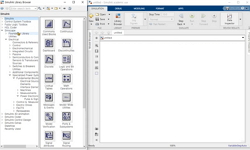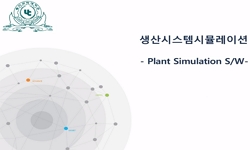This study proposes various production management techniques that can be used in Precast Concrete(PC) manufacturing plants to improve the productivity of the PC supply chain, and evaluates the performance of each technique using simulation. To this en...
http://chineseinput.net/에서 pinyin(병음)방식으로 중국어를 변환할 수 있습니다.
변환된 중국어를 복사하여 사용하시면 됩니다.
- 中文 을 입력하시려면 zhongwen을 입력하시고 space를누르시면됩니다.
- 北京 을 입력하시려면 beijing을 입력하시고 space를 누르시면 됩니다.
https://www.riss.kr/link?id=T16622694
- 저자
-
발행사항
청주 : 충북대학교, 2023
-
학위논문사항
학위논문(석사) -- 충북대학교 , 토목공학과 건설관리 및 시스템공학 전공 , 2023. 2
-
발행연도
2023
-
작성언어
한국어
- 주제어
-
KDC
532.7 판사항(5)
-
발행국(도시)
충청북도
-
기타서명
Simulation-based Productivity Improvement in a Precast Concrete Supply Chain: Focused on Inventory Management and Mold Allocation
-
형태사항
ix, 99 p. : 삽화, 표 ; 26 cm
-
일반주기명
충북대학교 논문은 저작권에 의해 보호됩니다
지도교수: 정근채
참고문헌 : p.91-97 -
UCI식별코드
I804:43009-000000058157
- 소장기관
-
0
상세조회 -
0
다운로드
부가정보
다국어 초록 (Multilingual Abstract)
This study proposes various production management techniques that can be used in Precast Concrete(PC) manufacturing plants to improve the productivity of the PC supply chain, and evaluates the performance of each technique using simulation.
To this end, a simulation model is developed by defining the entities, resources, and processes of the PC supply chain. Five verification theories were used to confirm the suitability of the simulation model produced based on the information as a test bed, and it was confirmed that the simulation model had no errors in the system and reflected reality similarly.
Next, raw material inventory management policies are selected to improve productivity for raw material supply, and the performance of each methodology is evaluated. There are three raw material inventory management policies: QO, PO, and sS. Prior to the experiment, the process of optimizing the parameter values of each policy was performed for all experimental cases. As a result of ANOVA on the experimental results, it was found that the raw material inventory management policy and two influencing factors had a significant effect on the inventory management cost, a performance evaluation measure. The policy that showed the best performance in all the experimental cases was QO, and it is judged that it was possible to prepare for the fluctuations in the supply and demand of raw materials through the use of a real-time inventory check system.
Finally, in order to improve the productivity of PC member production, five methods of calculating the number of molds Min, Max, SS, AS, and MBAS are developed and the performance of each methodology is evaluated. As a result of the experiment, both the method of calculating the number of molds and the influencing factors were judged to have a significant effect on the mold allocation cost, which is a performance evaluation measure. showed low cost. In addition, as a result of performing sensitivity analysis of cost according to the setting of unit delivery delay cost, SS up to about 180,000 won, MBAS up to about 420,000 won, and other AS showed the lowest cost.
These experimental results indicate that an appropriate production management technique should be adopted according to the information of the target system. In conclusion, it was possible to improve the overall productivity of the PC supply chain through the rational operation and management method of the PC manufacturing plant.
목차 (Table of Contents)
- Ⅰ. 서 론 1
- 1.1 연구 배경 및 목적 1
- 1.2 국내외 연구 동향 4
- 1.2.1 건설 분야의 시뮬레이션 관련 연구 6
- 1.2.2 건설 분야의 원자재 재고관리 관련 연구 7
- Ⅰ. 서 론 1
- 1.1 연구 배경 및 목적 1
- 1.2 국내외 연구 동향 4
- 1.2.1 건설 분야의 시뮬레이션 관련 연구 6
- 1.2.2 건설 분야의 원자재 재고관리 관련 연구 7
- 1.2.3 건설 분야의 생산 몰드할당 관련 연구 8
- 1.3 연구 범위 및 방법 9
- Ⅱ. PC 시뮬레이션 모델 11
- 2.1 모델 정의 11
- 2.1.1 PC 공급사슬 정의 11
- 2.1.2 개체 정의 14
- 2.1.3 자원 정의 16
- 2.1.4 프로세스 정의 18
- 2.2 모델 개발 21
- 2.2.1 모델 프레임워크 21
- 2.2.2 데이터 모듈 23
- 2.2.3 플로차트 모듈 24
- 2.2.4 애니메이션 모듈 28
- 2.3 모델 검증 31
- 2.3.1 대상 시스템 정보 31
- 2.2.2 논리성 검증(verification) 34
- 2.2.3 유효성 확인(validation) 35
- 2.4 소결 37
- Ⅲ. 원자재 재고관리 38
- 3.1 문제 정의 38
- 3.1.1 원자재 재고관리 방식 분석 38
- 3.1.2 기호 정의 40
- 3.1.3 성능평가척도 정의 41
- 3.2 원자재 재고관리 정책 41
- 3.2.1 정량발주 방식(Quantity Ordering Method; QO) 41
- 3.2.2 정기발주 방식(Period Ordering Method; PO) 44
- 3.2.3 (s, S) 발주 방식((s, S) Ordering Method; sS) 45
- 3.3 재고관리 정책 성능평가 47
- 3.3.1 대상 시스템 정의 47
- 3.3.2 시뮬레이션 서브 모델 제작 49
- 3.3.3 실험 계획 50
- 3.3.4 실험 결과 52
- 3.4 소결 59
- Ⅳ. 생산 몰드할당 61
- 4.1 문제 정의 61
- 4.1.1 생산 몰드할당 방식 분석 61
- 4.1.2 기호 정의 62
- 4.1.3 성능평가척도 정의 64
- 4.2 몰드 개수 산정방식 64
- 4.2.1 최소(Minimum; Min) 65
- 4.2.2 최대(Maximum; Max) 66
- 4.2.3 단순 여유(Simple Slack; SS) 66
- 4.2.4 실질 여유(Actual Slack; AS) 67
- 4.2.5 몰드 기반 실질 여유(Molds Based Actual Slack; MBAS) 69
- 4.3 몰드 개수 산정방식 성능평가 72
- 4.3.1 대상 시스템 정의 72
- 4.3.2 시뮬레이션 서브 모델 제작 75
- 4.3.3 실험 계획 79
- 4.3.4 실험 결과 80
- 4.4 소결 87
- Ⅴ. 결 론 89
- 참고문헌 91












